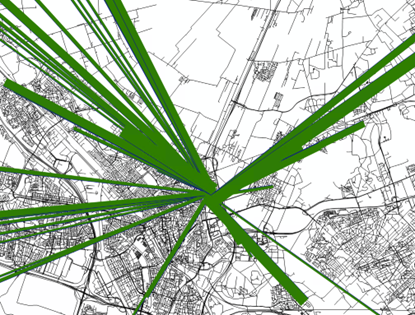Actualisation strategic traffic model StraVeM
23097
The Province of Utrecht uses the strategic traffic model StraVeM to carry out mobility analyses, but encounters some challenges. TML offers advice for improvement, focusing on refining allocations, zoning, and network, and establishes a priority list for future adjustments.
To optimise the mobility of its residents, the province of Utrecht had a strategic traffic model developed, StraVeM, of which they received a new version in early 2023. With this model, the province can carry out targeted analyses and make plans for different modes of transport (car, bicycle, and public transport). However, there are some challenges that complicate the use of the model. Therefore, the Province of Utrecht asked TML to advise on specific research questions.
These questions include the assumptions for forecast years, the choice of base year, calculation time, zoning, the approach to traffic control installations (VRIs) and intersection modelling, and the handling of network errors.
Overall, we concluded that the modelling approach is often sound, but there is room for improvement in practical implementation and in certain model choices. We therefore recommended a partial update, focusing on improving allocations, zoning, and network. We drew up a list of recommendations and assigned a priority to each one.
To optimise the mobility of its residents, the province of Utrecht had a strategic traffic model developed, StraVeM, of which they received a new version in early 2023. With this model, the province can carry out targeted analyses and make plans for different modes of transport (car, bicycle, and public transport). However, there are some challenges that complicate the use of the model. Therefore, the Province of Utrecht asked TML to advise on specific research questions.
These questions include the assumptions for forecast years, the choice of base year, calculation time, zoning, the approach to traffic control installations (VRIs) and intersection modelling, and the handling of network errors.
Overall, we concluded that the modelling approach is often sound, but there is room for improvement in practical implementation and in certain model choices. We therefore recommended a partial update, focusing on improving allocations, zoning, and network. We drew up a list of recommendations and assigned a priority to each one.


